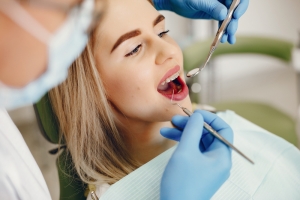Modern dental care has come a long way from the days of rigid, bulky false teeth. Today, people expect more than just function from dental solutions, they want comfort, a natural look, and materials that work with their lifestyle. This shift in patient needs has encouraged dentists to explore newer options that blend well with the daily realities of life.
Among these choices, soft and adaptable denture designs have gained attention. These options meet the demand for better comfort, less visible hardware, and easier adjustment. In this article, we explore how newer denture materials, like flexible types, are making a mark in today’s dental world.
From Stiff to Soft: The Evolution of Denture Materials
In the past, dentures were mostly made from hard acrylic or metal. While these materials are strong, they come with downsides. Rigid designs often led to sore spots, difficulty with fit, and an unnatural look. Adjustments were common, and many wearers never fully got used to the feel of traditional dentures.
Over time, advances in dental materials introduced softer alternatives. These options allowed for a better fit against the gums and less irritation. The idea was simple: give patients something that moves more naturally with their mouth instead of fighting against it.
Flexible Solutions for Everyday Life
Dentures are no longer seen as a one-size-fits-all solution. People now want dental devices that feel comfortable from the start. For individuals with sensitive gums or an active lifestyle, soft designs provide a noticeable difference.
They are especially helpful for replacing a few teeth rather than an entire set. Because they blend in better and adapt to movement, many users say they feel more confident using them in public and during meals. For this reason, flexible dentures have become a good fit for those looking for both comfort and ease of use.
Dentist Recommendations in Modern Practice
Dental professionals now consider not just the condition of the teeth and gums but also the patient’s comfort, social needs, and daily habits. For patients who can’t tolerate the pressure of rigid materials or who need partial replacements that don’t rely on metal clasps, softer materials are often suggested.
However, they are not for everyone. In cases where many teeth are missing or where the bite force is strong, dentists may recommend sturdier options. That said, softer designs are now more commonly part of the conversation and offer an alternative worth discussing.
Better Fit with Digital Tools
One reason these softer designs have gained popularity is the way they are made. Thanks to digital scans and 3D imaging, creating custom-fit dentures has become faster and more accurate. Dentists can now use these tools to capture the shape of your mouth in detail, helping labs create better-fitting devices.
These digital methods reduce the need for multiple adjustments and speed up the entire process. That means fewer visits and a more comfortable experience overall.
Real-World Feedback and Use
People who wear modern soft dentures often talk about the difference in daily use. They report less slipping, fewer sore spots, and more natural movement. For many, it's not just about how they look but how the dentures make them feel day-to-day.
Because of this comfort and ease, more younger adults are exploring these options as well, especially when needing partial replacements.
Comparing Costs and Benefits
While not the most expensive choice, soft denture designs do cost more than basic rigid ones. This is mainly due to the materials and more advanced production methods. But many patients consider the added comfort worth the extra price.
It's important to remember that cost alone shouldn't be the deciding factor. A lower-priced option that feels uncomfortable may not be worn consistently, which defeats its purpose.
What the Future Holds
Dental labs are continuing to test even more advanced materials, ones that are lighter, stronger, and even more lifelike. There’s also growing interest in combining flexible materials with dental implants for added stability.
As the focus of dental care shifts more toward patient comfort and personalization, these types of dentures are expected to play a larger role.
Conclusion: A Practical Step Forward
The dental world is moving in a direction that prioritizes not just function, but quality of life. Dentures that are easier to wear, less visible, and more adaptable reflect that shift. While flexible dentures may not be for everyone, they offer a smart, patient-centered option in many cases.
If you are exploring ways to replace missing teeth, this newer type of denture is worth asking about. A conversation with your dentist can help you find a solution that feels as good as it functions.






